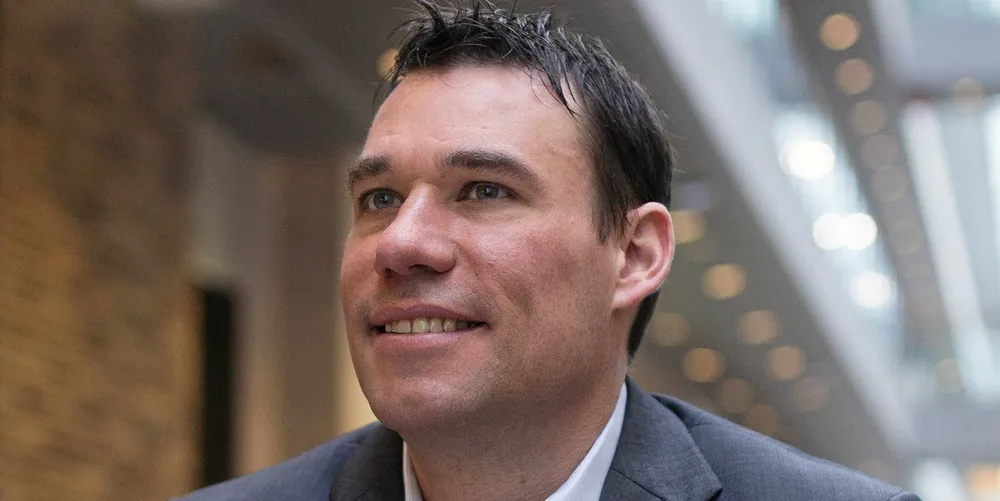'Offshore wind is a strong fit': Hydrostor CEO eyes energy storage big time after Goldman Sachs backing
INTERVIEW | Wind at sea and 24/7 corporate green supply deals among options as compressed-air pioneer accelerates ambitions following $250m investment, says Curtis VanWalleghem

A long-duration energy storage system newly backed by Goldman Sachs is “absolutely a strong fit” for offshore wind farms looking to store huge amounts of surplus power, said the boss of the group building giant plants based on compressed air technology.
VanWalleghem said he could envisage a gigawatt-scale, 20-hour duration hydrostor plant to smooth supplies of power piped from offshore wind farms.
“We are really at that wholesale level, we help regional grids effectively balance their intermittent supply of generation.
Better bet than batteries
Newly armed with Goldman Sachs’ preferred equity financing, Hydrostor aims to carve out a leading position among a new breed of large-scale, long-duration storage technologies operating where lithium-ion batteries “aren’t the right horse for the course”.
While Li-ion systems “do a very good job” helping provide ancillary services and at durations at four hours or below, once above the eight-hour mark they start to suffer on both performance and cost grounds, claimed VanWalleghem, who has led Toronto-based Hydrostor since its formation in 2010.
“We’re more in the eight to 24-hour market – there you see pumped hydro as the competitor.”
But Hydrostor is keen to stress its siting flexibility compared to the considerable restrictions around where a pumped-hydro system can be located. VanWalleghem also claims Hydrostor has the cost edge over other emerging large-scale storage technologies, as well as Li-ion.
“We have a marginal cost of adding an hour of storage that is less than $50/kWh on an all-in basis, compared to Li-ion that’s north of $300,” he asserted.
According to VanWalleghem, that cost profile is one of the factors that allowed Hydrostor to secure financing at the level announced on Monday.
“There’s a lot of focus on the long duration segment – a lot of investors are paying more attention to the space.”
Sights on Europe
Hydrostor’s advanced stage at three of its projects – two in California and one in Australia totalling more than 1GW/8.7GWh – is another tailwind for the company, he believes.
The Goldman Sachs financing will allow the company to take those three forward – the CEO expects the first of its large-scale plants in service around 2025 (it already has demonstration facilities up and running in Canada). A 500MW, eight-hour duration plant will require an investment of about $1bn he said.
How A-CAES works
Hydrostor’s A-CAES technology uses electricity from the grid or a renewables project to run a compressor that produces heated compressed air. The heat is extracted from this air stream and stored for later use inside the company's proprietary thermal store. The compressed air is meanwhile pumped into a purpose-built cavern part-filled with water, pushing the water to the surface of a closed-loop reservoir.
When electricity is required, the system is basically unlocked — the pressure of the stored water on top of the compressed air pushes the gas up a pipeline back to the surface, where it is then reheated by the stored heat. This hot, compressed air is then expanded through a turbine to generate electricity.
Beyond the initial trio, Hydrostor is working on around 6GW of further projects mainly in the US, with one further afield in Chile where the company is exploring an early-stage plan to store huge amounts of solar power generated in the sun-rich nation.
But the company is now looking beyond that – for example to Europe, where it is already exploring an early-stage opportunity in the UK. “We’ll likely open a European office in the near future,” VanWalleghem said.
As it expands, Hydrostor will pursue a twin-track approach, he added, on the one hand developing its own projects – as with the initial trio – and also as supplier to utilities or developers “that want to buy our system and own it themselves”.
Before the Goldman Sachs investment “we’ve been pretty limited in the amount of capital we’ve put into development” – so set out to “raise a whole bunch of money so that we can go develop actual projects globally, and in other applications”.
With the finance in its pockets, Hydrostor now wants to ramp up by “orders of magnitude”.
(Copyright)